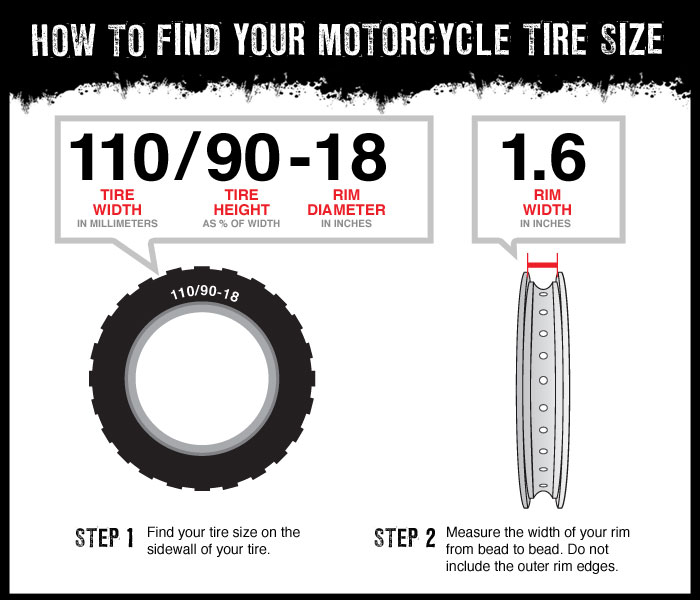Let’s be honest – tubes are a bit weird. Wiggly black bands of rubber, tubes are tedious to install, constantly need to be re-inflated and can be defeated by the tiniest thorns. When it comes time to purchase a new tube, how do you know which one to select?
Between the dozens of size options and the various valve stem types (Presta, what is that?), selecting the correct tube for your bike can be challenging. Check out our video below, or scroll down for a quick photo guide to help you select the perfect tire tube for your bicycle:
There are two important dimensions you must know when selecting a tube: The diameter of your wheel and the width of your tire. You need both to select the correct tube size. These dimensions can be found on your tire: Diameter x Width.
The first number is the diameter of your wheel. Sizes such as 26, 24, 20, 27.5, 29 and 700c are common tire diameters. The second number (after the X) is the width of your tire. The range for widths is usually between 1 and 3 inches. For example, a 26 x 1.75 size means the tire diameter is 26 inches and the tire width is 1.75 inches.
While your diameter measurement needs to be exact, your width measurement does not. Because inner tubes stretch, they typically come in a range of widths. For example, one of our most popular tubes is the 26 x 1.75-2.125” which means it fits a 26-inch diameter tire with a width in the range of 1.75 to 2.125 inches.
Some tires have dimensions in millimeters, but the basic measurement structure is still the same: Diameter x Width. Instead of inches, you will instead see something like 700c x 18 mm. The letter at the end of the tire diameter is a carryover from an old French system that used letters a, b and c to designate inner wheel rim diameters.
After you know your tube size, you need to select your valve stem type. The valve stem is the metal part of the bicycle wheel that sticks out and allows air to go into (and stay in) your tire. There are three types of valve stems: Schrader, Presta and Woods/Dunlop. The Woods (or Dunlop) valve stem is extremely rare and typically only found in the Netherlands or Asia, so we won’t spend any time on it here.
Schrader valves, on the other hand, are the most common valve stems found on bicycles. The most recognizable of the bunch, sometimes they are referred to as standard valves. An easy way to remember if you have a Schrader valve is to think of the “S.” Schrader valves are short, sturdy and standard. If you don’t know what valve stem you have, it is likely a Schrader.
The last valve stem type is Presta. Presta valves are traditionally found on higher-end bicycles preferred by professional cyclists. Think of the “P” in Presta standing for professional, performance and premium.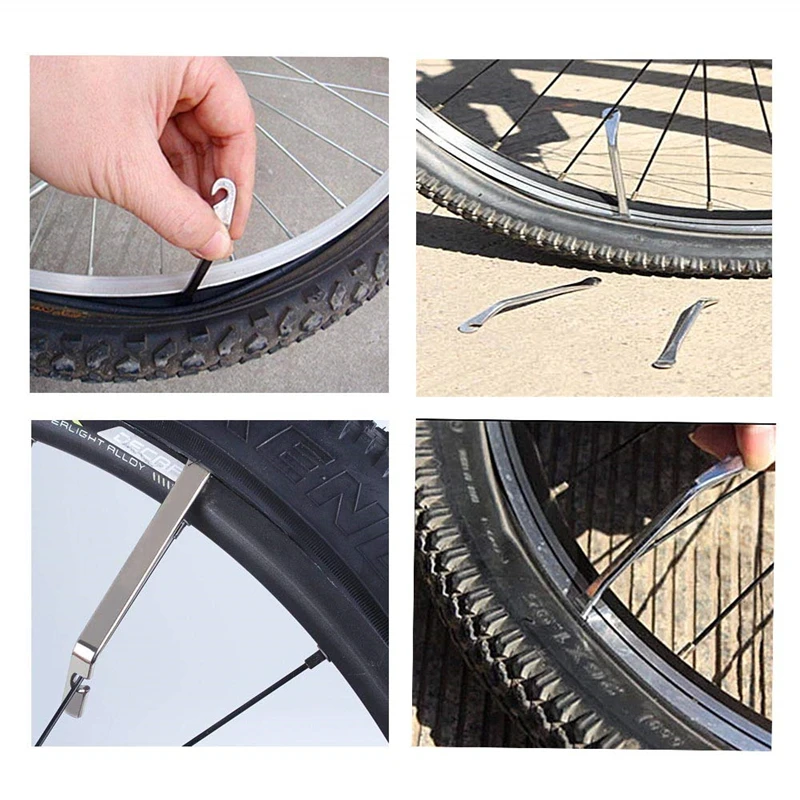 If you have a Presta valve, you usually know it.
If you have a Presta valve, you usually know it.
The last consideration you need to keep in mind when selecting a tube is durability. There is no reason for you to suffer from flat tires - Riding flat free can be a reality. Self-sealing tubes are heavy duty and designed to stop flats for up to two years! To gain that type of protection, you need to purchase tubes that come pre-installed with Slime tire sealant.
Alternatively, if you already have empty tubes, but want the protection that self-sealing tubes provide, you can insert the tube sealant yourself. Learn more about tube protecting sealant here.
Congratulations, you are now a tube expert! When purchasing tubes, if you consider tire size, valve stem type and durability needs, then you will never select the wrong tube again. Go forth and start riding!
If you’ve been trying to work out how to measure the tire size on your bike for a replacement inner tube, then I’ve got a pretty good idea of how frustrated you’re feeling right now.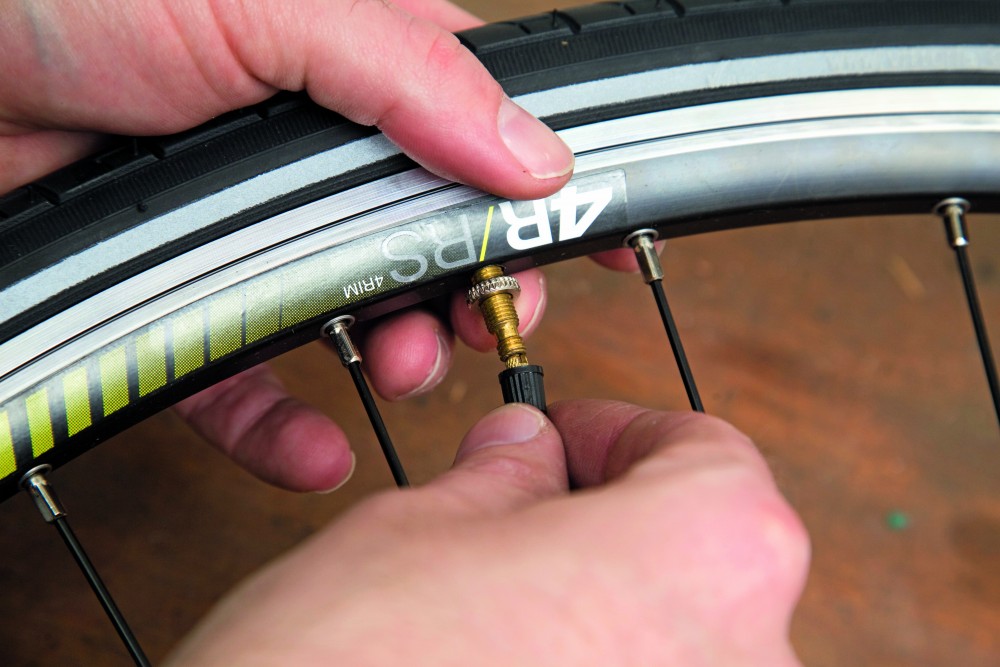
It’s something that should be incredibly easy and yet seems to be more like rocket science. But, fear not, I’m here to make life easy for you. I’ve got a couple easy things for you right now. The first is a a table that shows each of the most popular tire sizes along with a recommended inner tube, and a link where you can go straight to an online retailer and buy one for yourself right away. I’ve also got a simple process for you to follow to determine what size your bike tires are. All you need is your bike tire and a sharp pair of eyes – no measuring required!
Take a deep and relaxing breath (it’s going to be easier from now on, I promise) and let’s go have a look.
Here you’ll find an easy to follow table showing the most common bicycle tire sizes and a couple recommendations for great inner tubes that fit those tires.
When you’ve determined your tire size – we’ll get to that in a moment – you just click on the bar below that shows your tire diameter (such as “700c”) and this will open up to show the tire widths that are available and buttons to click to see the inner tubes.
Easy!
700c tire diameter
Recommended tube | Alternative | |
700c x 23 | SHOP NOW | SHOP NOW |
700c x 25 | SHOP NOW | SHOP NOW |
700c x 28 | SHOP NOW | SHOP NOW |
700c x 30 | SHOP NOW | SHOP NOW |
700c x 32 | SHOP NOW | SHOP NOW |
700c x 33 | SHOP NOW | SHOP NOW |
700c x 35 | SHOP NOW | SHOP NOW |
700c x 36 | SHOP NOW | SHOP NOW |
700c x 37 | SHOP NOW | SHOP NOW |
700c x 38 | SHOP NOW | SHOP NOW |
700c x 40 | SHOP NOW | SHOP NOW |
700c x 42 | SHOP NOW | SHOP NOW |
700c x 43 | SHOP NOW | SHOP NOW |
29 inch tire diameter
Recommended tube | Alternative | |
29x2. | SHOP NOW | SHOP NOW |
29x2.20 | SHOP NOW | SHOP NOW |
29x2.25 | SHOP NOW | SHOP NOW |
29x2.30 | SHOP NOW | SHOP NOW |
29x2. | SHOP NOW | SHOP NOW |
29x2.40 | SHOP NOW | SHOP NOW |
29x2.50 | SHOP NOW | SHOP NOW |
29x2.60 | SHOP NOW | SHOP NOW |
27. 5 inch tire diameter
5 inch tire diameter
Recommended tube | Alternative | |
27. | SHOP NOW | SHOP NOW |
27.5x2.10 | SHOP NOW | SHOP NOW |
27.5x2.25 | SHOP NOW | SHOP NOW |
27.5x2.30 | SHOP NOW | SHOP NOW |
27. | SHOP NOW | SHOP NOW |
27.5x2.40 | SHOP NOW | SHOP NOW |
27.5x2.50 | SHOP NOW | SHOP NOW |
27.5x2.60 | SHOP NOW | SHOP NOW |
27. | SHOP NOW | SHOP NOW |
26 inch tire diameter
Recommended tube | Alternative | |
26x1. | SHOP NOW | SHOP NOW |
26x1.75 | SHOP NOW | SHOP NOW |
26x2.1 | SHOP NOW | SHOP NOW |
26x2.35 | SHOP NOW | SHOP NOW |
20 inch tire diameter
Recommended tube | Alternative | |
20x1. | SHOP NOW | SHOP NOW |
20x2.0 | SHOP NOW | SHOP NOW |
16 inch tire diameter
Recommended tube | Alternative | |
16x1. | SHOP NOW | SHOP NOW |
16x1.75 | SHOP NOW | SHOP NOW |
16x2.125 | SHOP NOW | SHOP NOW |
Look up “bike inner tube” on Amazon and you’ll get over a thousand black rubber rings showing up.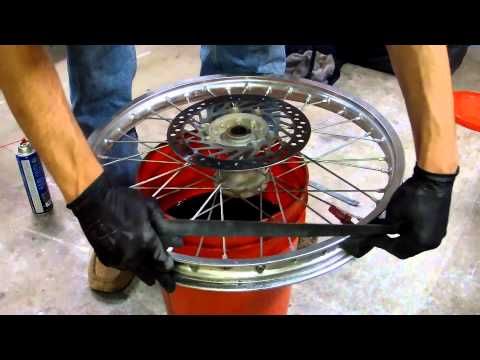 They all look pretty similar but they’ve got different reference numbers and sizing – so, how do you choose between them?
They all look pretty similar but they’ve got different reference numbers and sizing – so, how do you choose between them?
Well, luckily it’s easy to work out what size your bike tyre is and you can then use that to pick the right size of inner tube.
Here’s what you need to do. First, squat down next to your bike so that you can see the wheel from the side. Now, have a look around the sidewall of the tire – this is the rubber circle that sits in between the metal wheel rim and the tire knobbles that touch the ground. The sidewall is usually black but on some bikes, such as cruisers, it can be tan or white. The color doesn’t matter because what you’re looking for is a series of numbers. You might find a brand name for the tires (such as Schwalbe or Continental) and you’ll also see numbers which look like either of the following:
26×1.5 (an imperial system code)
700c x 23 (a metric system code)
If you see an imperial code, this is the sizing of your tire in inches (e.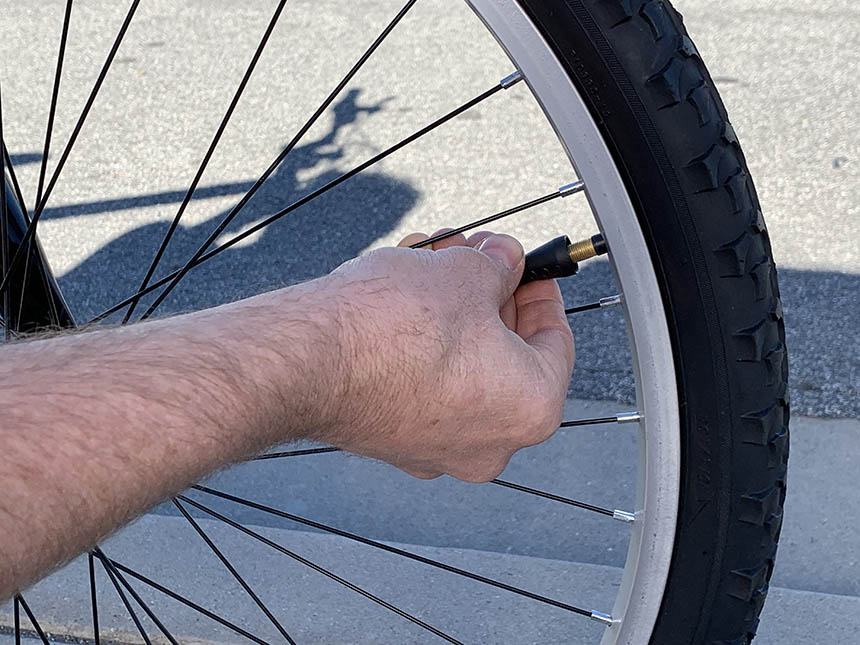 g. 26” diameter x 1.5” width). A metric code is in millimeters (e.g. 700mm diameter x 23mm width).
g. 26” diameter x 1.5” width). A metric code is in millimeters (e.g. 700mm diameter x 23mm width).
The inner tube that you need will have code that includes the tire diameter (from the examples above this would be 26” or 700mm) and a width that includes the tire width (e.g. 1.3”-1.7” or 19-25mm).
To choose the correct size of inner tube, simply take your tire size code and look this up in the table above. Right next to your tire size will be a recommended inner tube and a second alternative (if the first one isn’t available).
Want to delve a little more into what the tire size codes mean? Ok, let’s take a look.
The first number in the code (such as 26 or 700) is the nominal diameter of the tire in either inches or millimeters. This will vary somewhat according to the tire pressure, so it’s not a good idea to try and measure it with a ruler or tape measure. Tires that are under-inflated, or with very worn treads, can have a smaller diameter than the one that’s shown on the tire sidewall.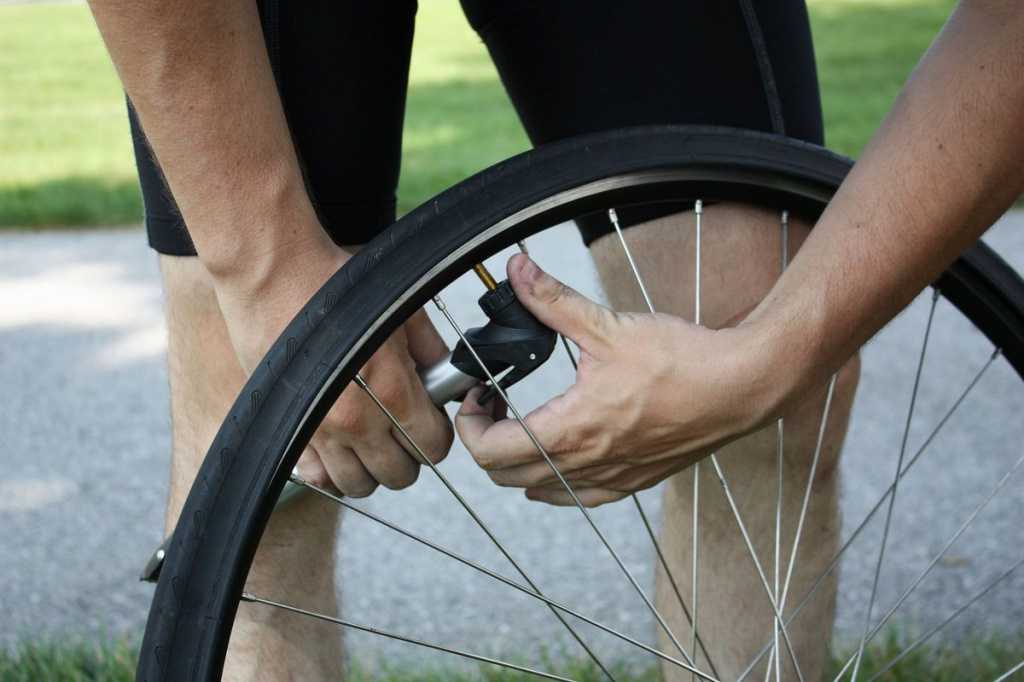
The second number (e.g. 1.5 or 23) is the nominal width of the tire, again in either inches or millimeters. Again, what you can actually see of the tire width will vary based on how much air the tire has in it, so an actual measurement might well differ from the tire code.
If you see a “c”, for example in “700c x 23” then this refers to an old French system of classifying bike tires according to their widths. An “a” tire was the narrowest and a “d” was the widest. So long as you have the tire diameter and width code numbers, you can safely ignore this letter.
It’s keeping in mind that you shouldn’t swap from tires or tubes measured in inches to ones measured in millimeters. These number codes are nominal, meaning that they don’t necessarily match up to the actual tire and tube dimensions. So, a millimeters tire is unlikely to fit well on an inches wheel and you’ll probably get problems down the road. Stick with imperial tires for imperial wheel rims and vice versa.
Edited: 06/15/2017
In this article we will talk a little about the bicycle chamber.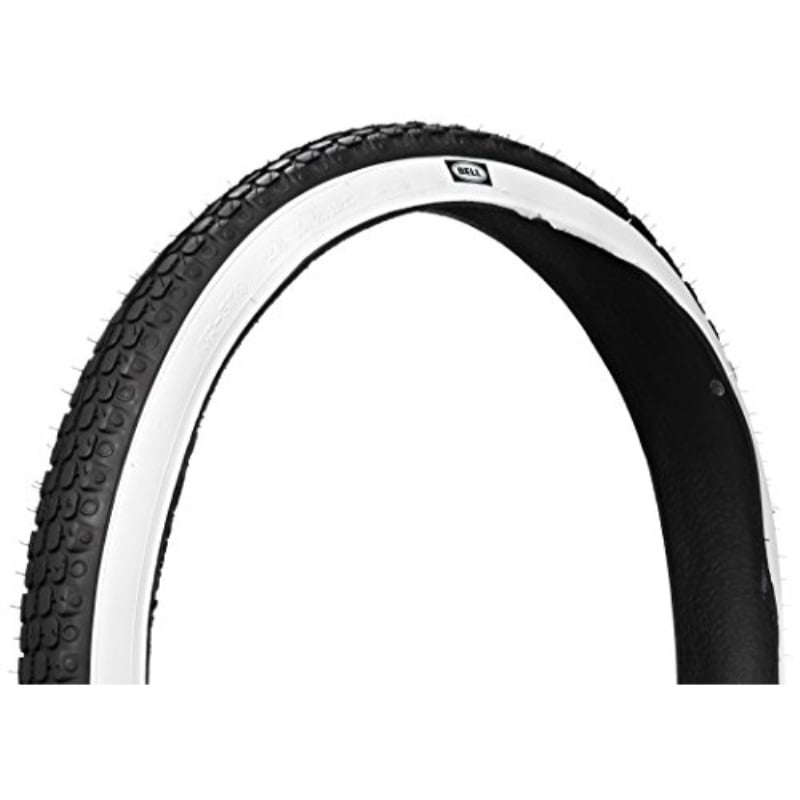
As you can see from the picture on the right with the cross section of the wheel, this is the pink outline numbered 5.
The first thing to start talking about choosing a camera is its size.
Inner tube size must match the size of the tire into which it is inserted. The tire size and pressure for which it is designed are indicated on the side of the tire itself. You can read about what the various numbers and letters written on bicycle tires mean here.
If the size is listed as 26x1.95, this means that the tire diameter is 26 inches and the width is 1.95. Therefore, you need to look for a camera with the same dimensions. If the tires are wide, then you can put a slightly smaller camera, it stretches a little. For example, with a tire width of 1.95 inches, you can take a camera with a width of 1.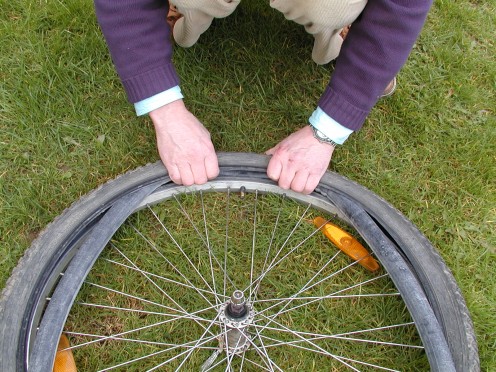 75 to 2.125 inches. This is usually indicated on cameras.
75 to 2.125 inches. This is usually indicated on cameras.
It is impossible to install a tube of a larger diameter and wider than indicated in the tire - it can be “chewed”.
Remember, it's not the bladder that holds the pressure, it's the tire.
| Tire size | Camera size |
This is the part of the chamber through which air is pumped into it.
 This is an automotive nipple - the most common and popular with bicycle tubes. It has the form of a metal cylinder with a thread 40 (sometimes 60) mm long and 8 mm in diameter. It is also used in suspension forks and some types of rear shock absorbers.
This is an automotive nipple - the most common and popular with bicycle tubes. It has the form of a metal cylinder with a thread 40 (sometimes 60) mm long and 8 mm in diameter. It is also used in suspension forks and some types of rear shock absorbers. Please note that if a tube with a Schrader nipple was on the wheel, then it is not worth changing it to a tube with a Presta nipple. This is fraught with a valve separation, which is cut off by the edge of the rim during braking.
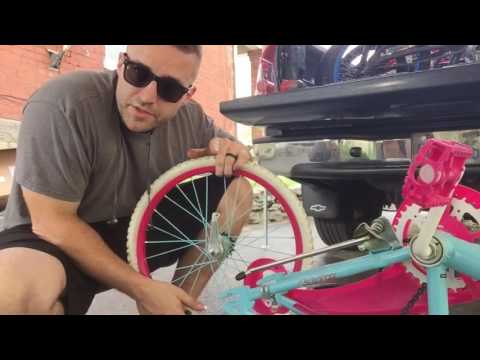 It is still fairly common. A valve is inserted inside the outer cylinder, which is held by a special nut. If he starts to "poison" - you need to replace the small rubber tube that is on him.
It is still fairly common. A valve is inserted inside the outer cylinder, which is held by a special nut. If he starts to "poison" - you need to replace the small rubber tube that is on him.
The most versatile chambers have a wall thickness of 0.9-1 mm. They are installed on almost any type of bicycle. These cameras usually use Presta or Shrader nipples. They have a good balance between weight and puncture.
Typically, thin-walled tubes with a wall thickness of 0.45-0.6 mm are used for racing bikes. Racers fight for every gram of weight, and they drive on more or less normal tracks. Buying them is not so easy - they are too specific. Sold mainly in specialized stores. Their prices are higher than regular ones.
For fans of extreme driving, there are special chambers for high loads. For example, cameras used for freeride have wall thicknesses up to 1.2 mm, and for downhill - generally up to 1.5 mm. Their weight does not play a fundamental role for such bikes and they are stronger, less prone to punctures.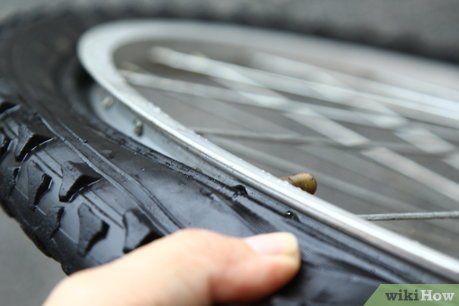
Most commonly butyl rubber, but the lightest and strongest chambers are still made of latex, although they are more expensive.
Butyl rubber is a synthetic rubber, usually black in color as shown on the right. It is most widely used for the manufacture of cameras for everyday driving. Chambers made from it are cheap, have good air retention and high wear resistance.
Latex, a natural rubber product, is used to make inner tubes for racing bikes. They are lighter than butyl rubber, have high elasticity, are resistant to punctures, but they have rather low wear resistance and are much more expensive. Often they are made in color. These cameras are mainly used by athletes.
A camera puncture is the worst thing that can happen to a camera. You can't ride on this camera. To solve this problem, there are special tools - anti-puncture. It is poured through the nipple into the chamber.
Anti-puncture inner tubes available.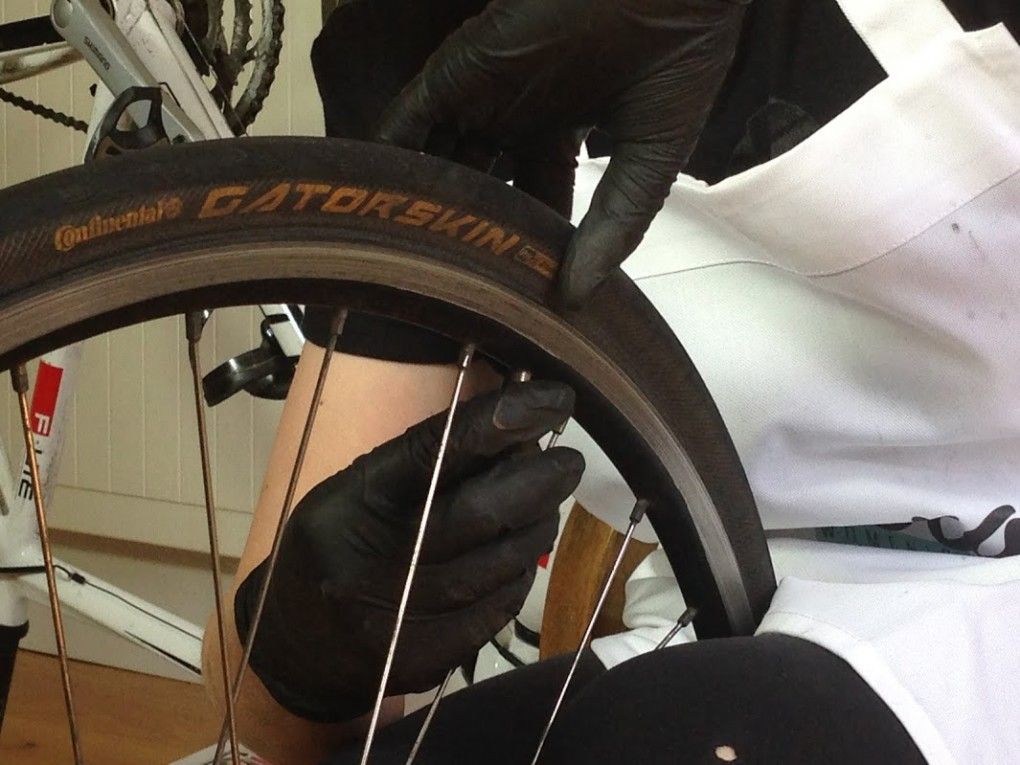 In them, already during production, a gel is poured inside, which tightens breakdowns.
In them, already during production, a gel is poured inside, which tightens breakdowns.
The principle of operation of this tool is as follows. When punctured, air begins to exit the chamber through the hole formed and the anti-puncture clogs the hole. It is effective for small punctures from thorns, nails, small cuts.
And the last. When choosing a tube for yourself, check your bicycle pump to see if it can pump it up. Although currently produced bicycle pumps can pump all existing types of nipples.
You can buy high-quality and fairly cheap bike tubes in the "Bicycle tubes" section of our store.
Let's start with the basics... What is a cycling tube? A bicycle bladder is a ball-like structure that can be inflated and deflated using a valve. When inflated with air, the chamber fills the tire, giving you a comfortable and safe ride.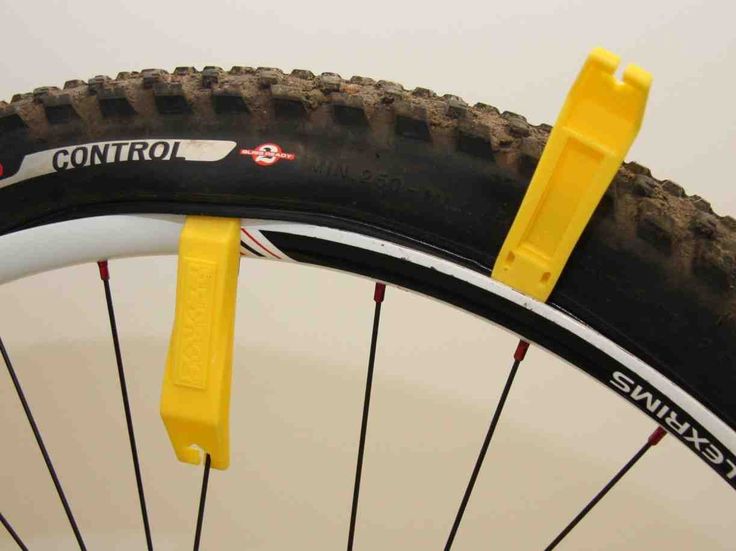
There are also tubeless bike tires, but most likely your bike is fitted with tubes.
Bicycle inner tube is always matched to the size of the tire fitted. There are quite a few different wheel diameters on the market right now, which can make it difficult for you to find the correct tube size for your bike.
Which inner tube do I need for my bike?
Tubes are available in different sizes and with different types of nipples. These are two key factors to consider when choosing a bike tube.
Tubes vary in size according to tire diameter and width:
 Wider tires and tubes are used on mountain bikes.
Wider tires and tubes are used on mountain bikes. Selecting the wrong diameter may result in a tube that is too long or the wrong width and the tube cannot fill the tire.
So how do you know what size you need?
There are two surefire ways to find the correct tube size for a bike:
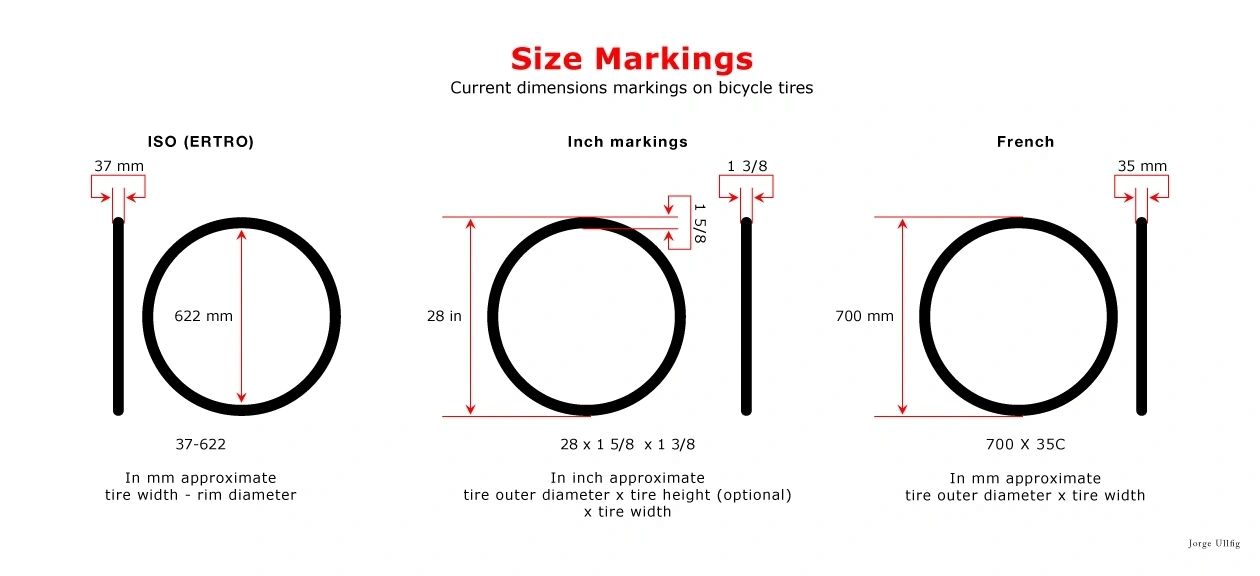
Check the sidewalls of your tire to determine its size
Valve used to inflate/deflate the tube. There are two main types of valves: Schrader and Presta. They are fairly easy to identify visually.
Presta valves are narrower. Schrader valves are shorter and thicker (used on cars).
Presta valve - left. Schrader valve - on the right.
Latex inner tubes are an alternative to the standard butyl tubes that are common on the market.
The advantage of a latex bladder is that it is lighter and more flexible, which can give a smoother ride feel as it can better respond to changes in the road surface.
The disadvantage of latex bladders is that they are more breathable than butyl bladders, so they need to be inflated more frequently.
A latex bladder can give a better bike performance.